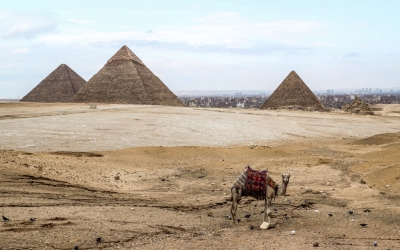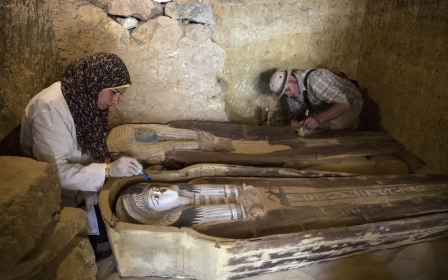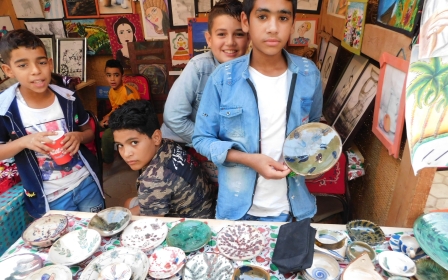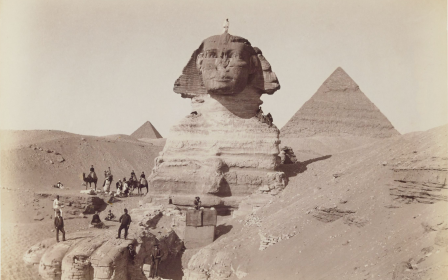Egypt to develop city of Saint Catherine, with an eye on faith tourists
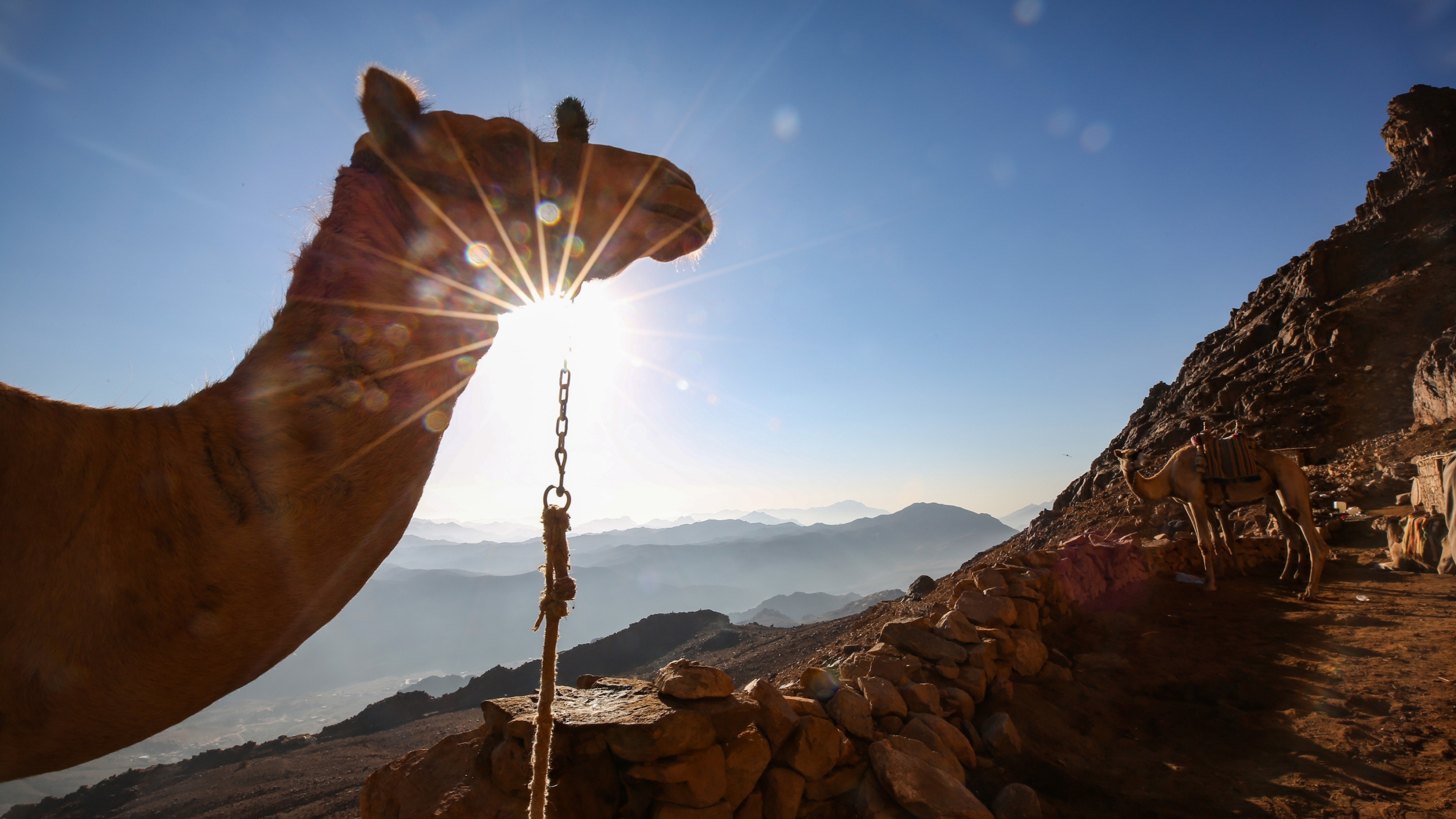
Egypt says it will embark on the development of Saint Catherine in South Sinai, finally paying attention to a precious area neglected for centuries.
The development of the city will include a large number of projects that aim at putting Saint Catherine on the international tourism map, almost for the first time.
From its monastery, the world's oldest still in use for its initial function, to the holy mountains of the city, including Mount Sinai and the matchless Springs of Moses, Saint Catherine has a lot to show this world.
"Saint Catherine has something to offer the adherents of all heavenly religions," Ahmed Idriss, a member of the Committee on Tourism in the Egyptian parliament, told MEE.
"It can stand as a symbol of tolerance and coexistence between all religions and cultures."
New MEE newsletter: Jerusalem Dispatch
Sign up to get the latest insights and analysis on Israel-Palestine, alongside Turkey Unpacked and other MEE newsletters
Comprehensive plan
The plan for the development of Saint Catherine was first unveiled by Egyptian President Abdel Fattah el-Sisi in late September.
The president's instructions for the development of the area came two months after Prime Minister Mustafa Madbouli conducted a tour of different parts of the city.
Sisi ordered concerned agencies within his government to formulate a plan for the full development of the city, one that preserves its religious specificity, but matches its religious, cultural and tourist importance.
'This development project aims to help Saint Catherine carve the niche it deserves on the international tourism map'
- Abdel Rahim Rihan, Ministry of Tourism and Antiquities
Despite its importance for the adherents of all monotheistic faiths, Saint Catherine was overlooked by Egypt's successive governments for decades.
The city is located about 200km northwest of Sharm el-Sheikh, by far Egypt's most developed and famous resort. However, its position failed to convince successive governments to allocate some funds for its development.
Saint Catherine has few hotels, its airport is in a poor condition, and its roads need repair.
Furthermore, the lack of accommodation in the city deprives its visitors of the opportunity for an extended stay.
The dilapidated condition of its airport also makes it difficult for international visitors to travel to the city directly from their home countries.
Few roads connect Saint Catherine with the rest of South Sinai, let alone the rest of Egypt, hiding it in plain sight even from visitors who seek to venture off the beaten path.
"The lack of adequate hotels and infrastructure in this city has scared tourists away and affected the level of services the city is able to offer to its visitors," Sami Suleiman, the head of the Tourism Section at the Investors' Association, a union of the nation's investors, told MEE.
Regenerated for tourism
Egypt calls the development plan for Saint Catherine the "Great Descent".
It will include the upgrade of its airport so that it can receive international flights, according to data released by the Egyptian cabinet about the project.
One flight will be operated daily to the city from Egyptian capital Cairo. There will also be weekly flights from Greek capital, Athens, to the city.
Saint Catherine Monastery, a World Heritage Site since 2002, will be restored. The library of the monastery, the second largest after that of the Vatican, will also be part of this restoration project. The library contains thousands of ancient and rare manuscripts.
The old lampposts on the road to the monastery will be removed and substituted with a modern lighting system.
At the entrance to the monastery, a new security gate will be installed to monitor those entering.
The garden of the monastery, which contains some of the world's oldest and most ancient trees, will be reorganised in a way that enhances its natural beauty. The ancient springs and water wells of the garden will also be restored.
Outside the monastery and in other parts of Saint Catherine, new hotels will be established to suit the tastes and the budgets of those who will visit the city.
There will also be a number of bazaars that parade goods produced by Saint Catherine's Bedouin residents, restaurants serving local Bedouin cuisine as well as other food, and commercial outlets that cater to the needs of those visiting the city.
"This development project aims to help Saint Catherine carve the niche it deserves on the international tourism map," Abdel Rahim Rihan, the head of the Ministry of Tourism and Antiquities' Research and Studies Section in South Sinai, told MEE.
Egyptian tourism authorities have set out numerous plans for the area, including the introduction of a sound and light show in the vicinity of Saint Catherine Monastery, benefiting from the mountains and unique geographical nature of the city.
They also want to establish an aerial lift over the mountains of the different sites of Saint Catherine.
A major mosque, called the Mosque of Descent, has been earmarked for the area. The Ministry of Religious Endowments and South Sinai authorities have already allocated 30 million Egyptian pounds (roughly $1.8 million) for the construction of the site.
Indispensable sector
The new development plan for Saint Catherine comes as Egypt tries to increase revenues from the tourism sector and capitalise on the different products a growth in this business can offer.
Tourism is of extreme importance to the Egyptian economy. It contributes 11.9 percent of Egypt's gross domestic product and employs 12 percent of the national workforce of 29 million.
Tourism authorities are hopeful that a focus on religious tourism can attract different types of visitors.
"The diversification of the tourism offerings will make us capable of addressing more tourists," Alaa al-Ghamri, an independent tourism expert, told MEE.
Egypt has been trying to tap into its abundant religious sites, including those in Sinai, for a long time now.
It has launched a forum for religious tolerance in Saint Catherine to bring followers of all faiths together.
Called "Here, we pray together", the forum aims to fight religious bigotry and encourage the followers of all religions to live in peace with each other.
"Saint Catherine is qualified to be a meeting point for all religions," Rihan said. "This city is unique in that it has antiquities that embody the greatness of all heavenly religions."
Egyptian authorities also have been trying to revive the path of the Holy Family in Egypt to encourage Christians from all parts of the world to explore sites believed to have been visited by Jesus Christ and Saint Mary when they arrived here.
Treasure trove
Saint Catherine is a religious treasure trove boasting a long list of must-see and must-visit sites, including the ancient Saint Catherine Monastery, its library and garden.
Mount Sinai is among the most sacred places in the city. The 7,500-feet high mountain - also called Mount Horeb in the Old Testament and Jebel Musa to Muslims - is venerated by the adherents of Judaism, Christianity and Islam as the place where God revealed the Ten Commandments to Moses.
The city also contains Moses Springs, a total of 12 water springs around which different stories about Moses revolve.
Only seven of the original 12 springs still exist. They had suffered from neglect and deterioration for a long time until 2015, when the Egyptian government started a project for their restoration.
The new plan will allow Egypt to attract tourists from near and far, said Suleiman.
"The development of Saint Catherine will allow the city to attract tourists from all parts of the world, including from Israel which is only a short distance away."
In 2019, over a million tourists from Israel visited different parts of Sinai.
This article is available in French on Middle East Eye French edition.
Middle East Eye delivers independent and unrivalled coverage and analysis of the Middle East, North Africa and beyond. To learn more about republishing this content and the associated fees, please fill out this form. More about MEE can be found here.


